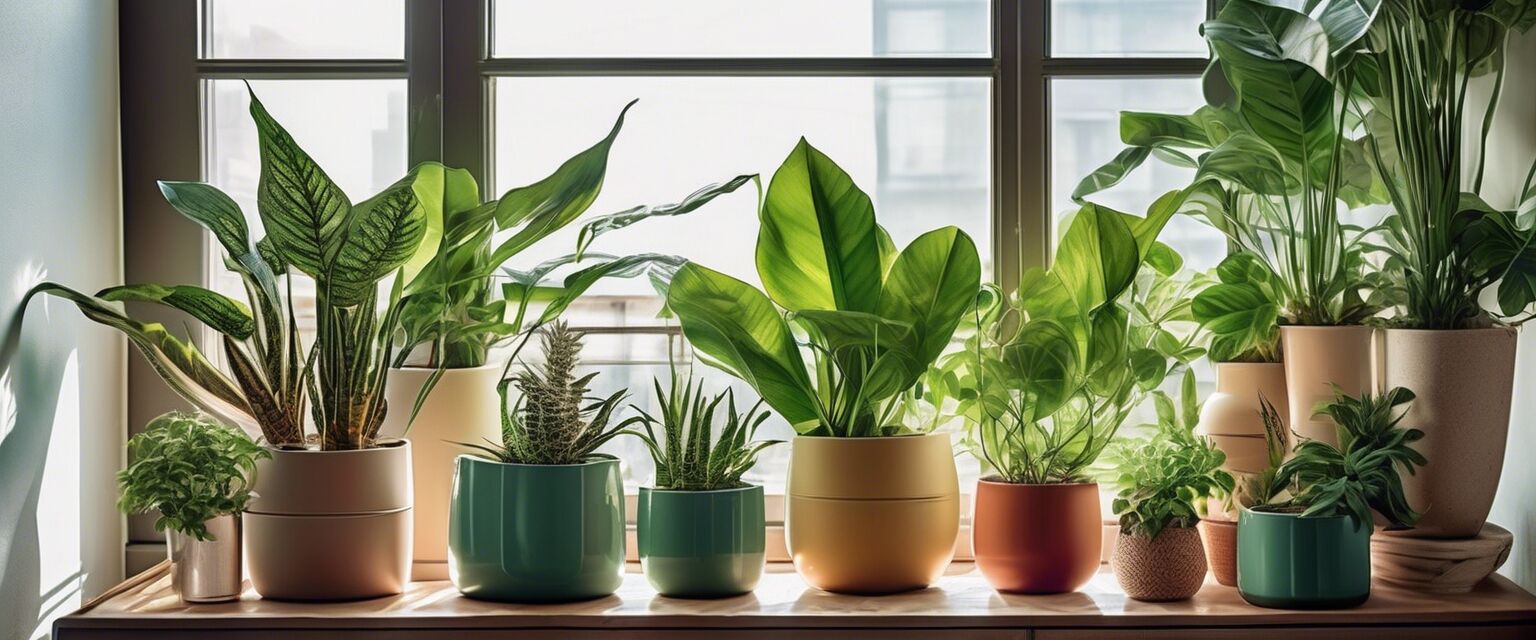
Creative Plant Arrangements for Small Spaces
Key Takeaways
- Utilize vertical space with shelves or hanging planters.
- Group plants with similar light and water needs together.
- Incorporate multi-functional furniture, such as plant stands or tables.
- Select low-maintenance houseplants for easy care.
- Consider short plants for limited surfaces and tall plants for height division.
Creating an inviting green oasis in a small space is entirely possible with the right designs and arrangements. Whether you're in an apartment, cozy office, or tiny home, you can make the most of your limited areas by carefully selecting and arranging your plants. Below are some inspiring ideas that will help you optimize your small spaces while adding a touch of nature to your decor.
1. Use Vertical Space
Vertical gardening allows you to maximize space while adding greenery at eye level. Here are some creative ideas:
- **Wall-mounted Shelves**: Install shelves on walls to display smaller plants and create an attractive focal point.
- **Hanging Planters**: Utilize ceiling hooks to hang plants with trailing vines, such as pothos or string of pearls.
- **Built-in Verticals**: Consider vertical planters with multiple tiers to house various species.
Vertical Plant Arrangements
| Plant Type | Light Requirement | Ideal Arrangement |
|---|---|---|
| Pothos | Low to bright indirect light | Hanging basket near a window |
| Spider Plant | Indirect sunlight | On a floating shelf |
| Ferns | Low to moderate light | Vertical wall planter |
2. Grouping Plants
Arranging plants in groups not only showcases their beauty but also allows for better care management. Here are tips for grouping:
- **Like-for-like Needs**: Group plants that require similar lighting and watering patterns to simplify maintenance.
- **Varying Heights**: Incorporate plants of various heights to create visual interest and depth.
- **Color Coordination**: Consider the color of foliage and blooms for a cohesive look.
Grouping Examples
| Group Type | Best Plant Combinations | Display Idea |
|---|---|---|
| Low-Light Group | Snake Plant, ZZ Plant, Cast Iron Plant | On a side table |
| Flowering Group | African Violet, Peace Lily, Bromeliad | In a window sill |
| Foliage Group | Philodendron, Monstera, Dracaena | On a bookshelf |
3. Multi-functional Furniture
Choosing furniture that also provides space for plants is a great way to add greenery without taking up extra room. Here are some ideas:
- **Plant Stands**: Use plant stands that also function as end tables or bookshelves.
- **Storage Benches**: Incorporate benches with space to place pots and store gardening tools.
- **Coffee Tables with Planters**: Look for coffee tables that have built-in planter boxes.
Furniture Options
| Furniture Type | Functionality | Plant Type |
|---|---|---|
| Side Table | Plant display and storage | Small succulents |
| Bookshelf | Plant display and book storage | Foliage plants |
| Plant Stand | Elevates plants for better visibility | Medium-sized plants |
4. Choosing the Right Plants
When working with small spaces, selecting the right plants is paramount to achieving a harmonious arrangement. Here are a few low-maintenance options:
- **Succulents**: Gorgeous and require minimal watering.
- **Snake Plant**: Hardy and very forgiving.
- **ZZ Plant**: It's nearly indestructible, perfect for beginners.
Low-Maintenance Houseplants
For more options, check our detailed guide on low-maintenance houseplants.
5. Create Layers with Heights
Creating layers can add depth and interest to your plant arrangements. Here are some methods:
- **Tall Plants at the Back**: Use taller plants to create a backdrop.
- **Medium Plants in the Middle**: This creates a transitional space.
- **Short Plants in the Front**: These allow visibility and accessibility.
Height Arrangement Examples
| Height Level | Plant Types | Best Placement |
|---|---|---|
| Tall | Dracaena, Areca Palm | Back of the arrangement |
| Medium | Pothos, Peace Lily | Middle of the arrangement |
| Short | Succulents, Cacti | Front of the arrangement |
Conclusion
Designing a green space in a small area requires creativity and thoughtfulness about plant selection and arrangement. By using vertical space, grouping plants thoughtfully, incorporating multi-functional furniture, and selecting the right plants, you can cultivate a vibrant environment that complements your lifestyle. Don't be afraid to experiment with arrangements and make the most out of every inch of your small sanctuary.
Tips for Beginners
- Start with easy-care plants to build your confidence.
- Keep your plant care routine consistent.
- Experiment with the placement of plants to observe how they thrive.
- Visit your local nursery to seek advice on plant selection.
Pros
- Enhances aesthetic appeal in small spaces.
- Improves air quality and liveliness of the area.
- Easy to customize according to personal style.
Cons
- Requires regular maintenance and care.
- Limited choices based on space and light.

